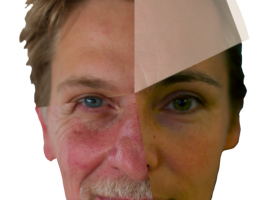
We know that proving positive change is as important as making positive change. You won’t be able to taste the fruits of your investment in new user behaviours or pilot test if you can’t prove (often through numbers) that what you’re doing is actually improving a situation.
Without evaluations, you won’t be able to scale and advance experiences and behaviours in an organisation no matter their greatness.
We evaluate behaviours in both qualitative and quantitative ways.
Qualitative, we conduct interview and make observations to document whether a change is a behavioural success. See this case from Vestforbrænding (and read an article from DR.dk here) about our qualitative evalutions.
Quantitative, and inspired by a Harvard University study, we have pioneered a new method in Denmark to follow and document user behaviours and attitudes. We call it Behaviour Measurement. Read more about the Behaviour Measurement tool below.
– – –
Behaviour Measurement Tool:
What is a Behavioural Measurement Tool?
Social Action has developed an online behavioural measurement tool that measures how people change over time during pilot tests. The tool has been tested during sustainability-minded pilot projects executed by Vestforbrændingen, Concito Climate Embassy, and the Central Denmark Region.
The tool makes it possible to mix qualitative and quantitative knowledge. The tool is designed by ethnologists who, by training, have a predilection for qualitative methods, but have been frustrated, that their generated qualitative knowledge, isn’t taken as seriously as quantitative knowledge. Especially when it comes to generating knowledge about the climate challenge and its necessitation of behavioural change on a global scale.
That’s why the behavioural measurement tool has been developed: To represent human values and meaning through information graphics in a vast variety of ways, only limited by imagination.
Example:
Social Action performed a behavioural change measurement on the adaptability of bio-waste sorting in private homes lasting 6 months. The 3 face figures above are the visualizations information gathered from this survey combined with ethnographic enquiries including interviews. The survey was split in 3 phases, and each face figure represents the evolving attitudes among the test subjects. The young face represents those who hold positive attitudes. The old face represents those who are neutral and the female, those who are negative. The development is meant for reading from left to right. The white space is intended for a mirror. As seen, the negative attitudes die out over time.
Why a Behavioural Measurement Tool?
In a society undergoing transformation because of the apprehension of climate challenges, attention is directed towards distributing products and services that are sustainable and user friendly. As a result, different kinds of pilot tests and research programs are being conducted within the fields of energy, waste, health and consumption. Results often detail and measure the physical aspects of the investigated challenge or potential (in terms of eg. energy, CO2 or time saved). At most, it is forgotten to measure the mental and behavioural factors that precede the physical.
The question is: what makes pilot project participants adapt to new phenomena and change behaviour – and how do we measure it?
This knowledge could be decisive to upscale the success of a project and to convince the right people within an organisation or company to keep the project running.
Ultimately, it is a change in behavioral patterns pilot-tests are often about. Let’s use the potential the behaviour changes give us.
What Happens When you Measure Peoples Change in Behavioural Patterns During A Pilot Test?
1) People’s behavioural changes are translated into numeric values that can be represented
2) The behaviour measurement makes the test-persons more aware of their own changes
3) By expliciting its results to test-persons, the behaviour measurement sustains positive changes in people’s behaviour
For more information, contact Anders Tolstrup at anders.tolstrup@socialaction.dk



 follow us
follow us